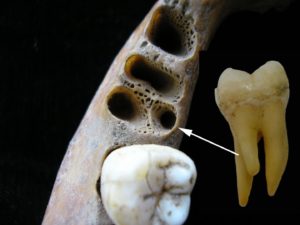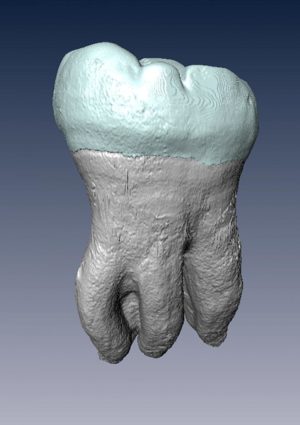
PROCEEDINGS OF THE NATIONAL ACADEMY OF SCIENCES—A study* describes a rare three-rooted lower molar in an archaic human in China as well as the corresponding implications for the history of human evolution in Asia. The presence of a third root on lower molars is rare, occurring in less than 3.5% of non-Asian humans, but can be found in up to 40% of populations derived from China and the New World. Other Homo sapiens fossils have been found in Asia that exhibit archaic traits that may have come from admixture with Denisovans. Shara E. Bailey and colleagues discovered a three-rooted lower molar in a 160,000-year-old Denisovan mandible from China. Previously, researchers thought that the three-rooted molar developed in Asian populations of H. sapiens well after their dispersal from the African continent, with a known case in H. sapiens from the Philippines that may be as old as 47,000 years. However, the presence of the three-rooted molar in a Denisovan that pre-dates H. sapiens dispersal, suggests that the trait is much older than previously thought. According to the authors, the three-rooted molar trait may have passed into modern Asian human populations when dispersing H. sapiens interbred with Denisovans.
________________________

A three-rooted lower second molar in a Denisovan individual from Xiahe, China. Jean-Jacques Hublin
________________________

A three-rooted lower first molar and its corresponding jaw in a recent Asian individual. Christine Lee (California State University, Los Angeles, CA)
________________________
Article Source: PNAS news release
*”Rare dental trait provides morphological evidence of archaic introgression in Asian fossil record,” by Shara E. Bailey, Jean-Jacques Hublin, and Susan C. Antón.
________________________
See, first-hand, the original fossils. See original artifacts. See the actual sites. Talk with the famous scientists. Join us on this unique specialized study tour.
________________________



